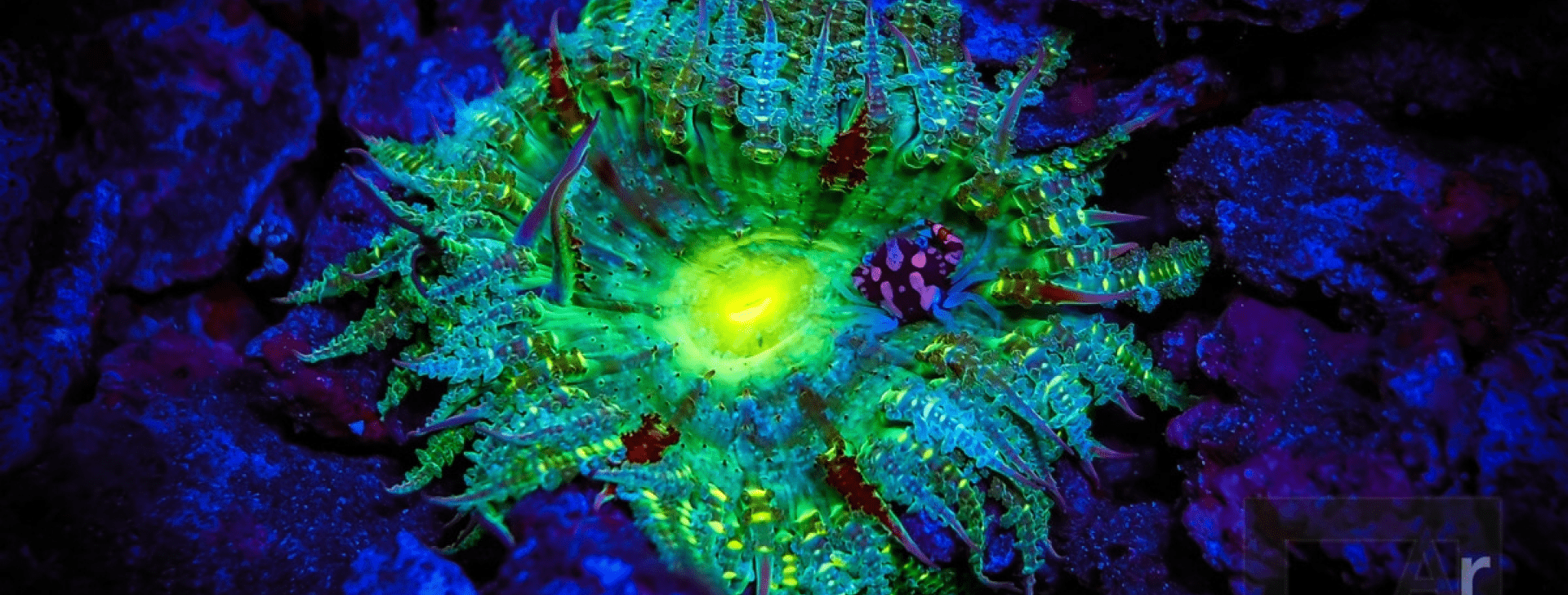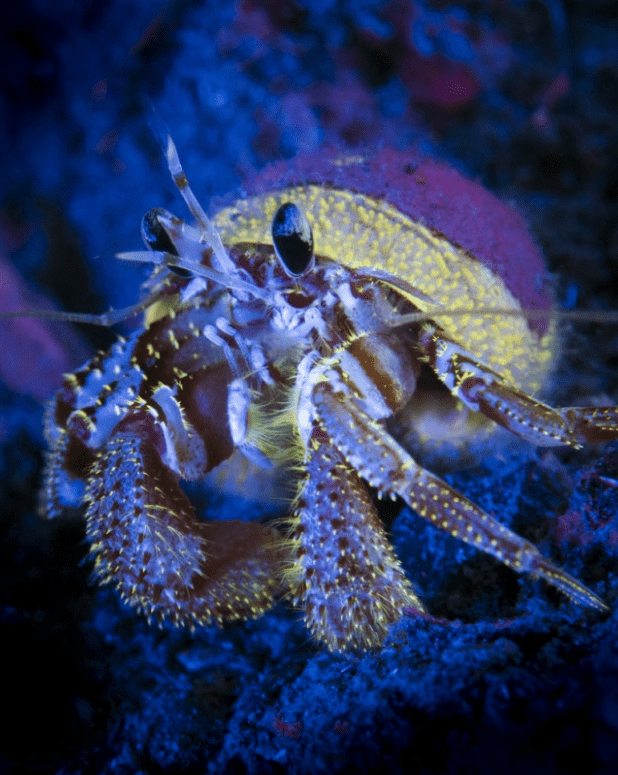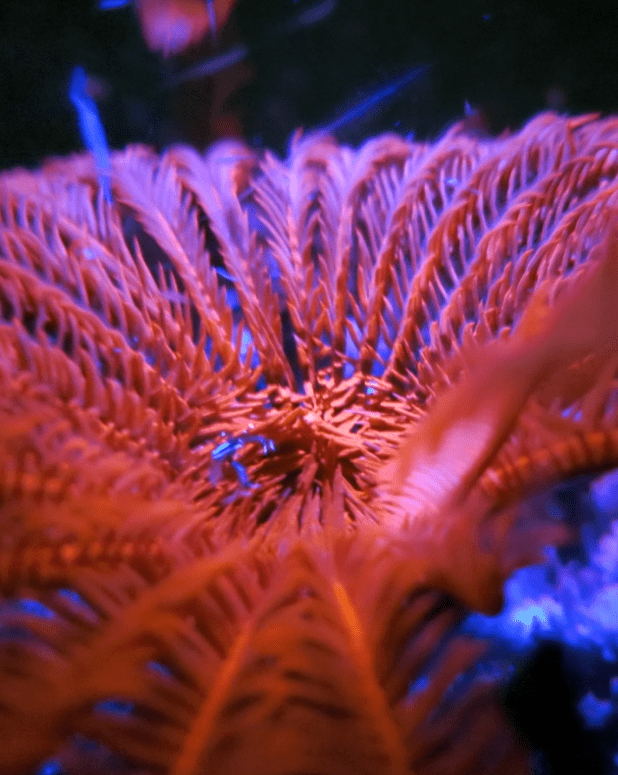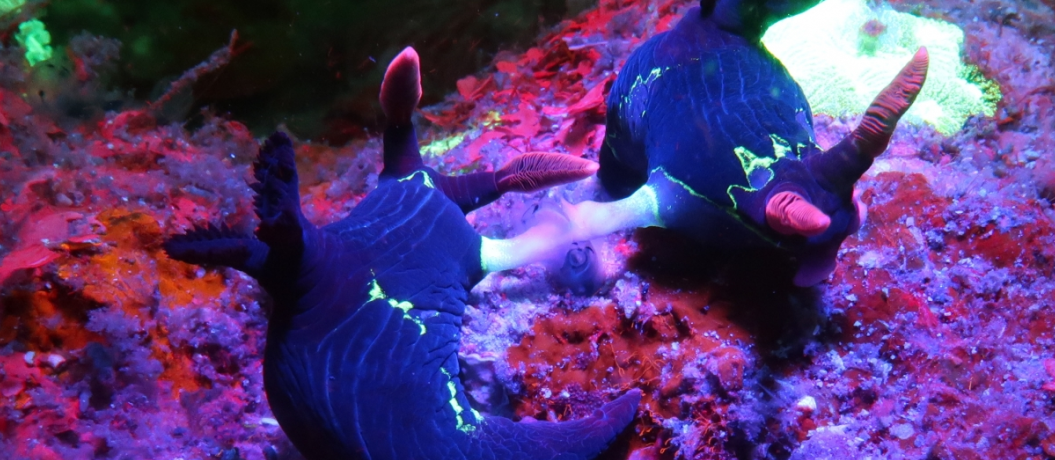
It is not general knowledge but shooting underwater fluorescence does NOT have to be done at night! Night fluo work is often simpler because the targets are easier to find since the contrast between the dark background and the fluorescing subject is so dramatic. However, many people don’t like diving at night for myriad reasons, not the least of which is very the limited visibility or they are simply afraid of the dark. I’ll admit to being a bit “on edge” myself in water where I can’t see anything except where my torch is shining. Many resort locations won’t even allow night diving for safety, legal or liability reasons. Those that do often require a minimum number of divers to fill a boat or make up a shore dive tour group which can be problematic (and expensive) as well. There are even some countries who have banned all night diving completely because of past night diving accidents.
At firedivegear.com, we have logged thousands of fluo dives and because of the fore mentioned issues associated with night diving we put a great deal of effort into developing techniques to do fluo photography in daylight conditions. With the proper gear and the right conditions, it can be done very effectively in daylight, it just requires a bit of practice to learn the techniques.
To be clear, shooting at noon, on a sun shiny day, on top of the reef in 15ft/5m of water is NOT going to work. The targets will indeed fluoresce but they will be completely overwhelmed by the ambient sun light. The key is to “operate in the shadows”.
Consider these situations:
Or a combination of any of these. I’ve even grabbed my buddy’s BCD, and dragged him over the target in direct sunlight to create a shadow. Many of my best images (published in international dive magazines) were shot in daylight conditions.
When operating like this, all of the issues listed above about diving at night disappear.

Equipment wise, everything is the same. It helps to have a torch on the higher end of the power scale and a filtered strobe but that’s not always necessary. More power is usually better and you may need to change your camera settings a bit but not significantly. Shooting wide angle in daylight can be difficult however because now you are dealing with a large area that needs to be dark (“in the shadows”), therefore this technique works best on macro subjects. You may often get a green “halo” around the central image. This is caused by the yellow barrier filter and the blue water where the excitation light is not exposing the background. Below are just a handful of the hundreds of daylight shots I’ve captured. The first image below of the Scorpion fish shows this halo effect.
Protect Your Photos From Being Stolen
Protect Your Photos From Being Stolen
This page is devoted to helping you with camera settings to capture fluorescence video and or still shots. One thing you will learn very quickly is that fluo photography can be very challenging compared to “normal” underwater shooting. This is because the fluorescence effect is so diminutive or dim. Underwater camera work can be challenging enough without throwing this into the mix. It takes a fair amount to “tinkering” and practice to get consistently good shots and video. One thing you will learn is that there is no “correct” or “proper” way to do fluo photography. There are of course things that apply no matter what the environment or equipments you are using but ask ten professionals what is best and you will get eleven answers.
This page will be a “living document” of suggested settings we receive from customers and staff personnel who have done the trials to see what works. You can then use these suggestions to hopefully get you close to good results from your very first foray out. If you have suggestions that you would like to share – please send them in. Use the Contact Us link and we will publish your suggestions on this page with full attribution to you.

This page is devoted to helping you with camera settings to capture fluorescence video and or still shots. One thing you will learn very quickly is that fluo photography can be very challenging compared to “normal” underwater shooting. This is because the fluorescence effect is so diminutive or dim. Underwater camera work can be challenging enough without throwing this into the mix. It takes a fair amount to “tinkering” and practice to get consistently good shots and video.One thing you will learn is that there is no “correct” or “proper” way to do fluo photography. There are of course things that apply no matter what the environment or equipments you are using but ask ten professionals what is best and you will get eleven answers.
This page will be a “living document” of suggested settings we receive from customers and staff personnel who have done the trials to see what works. You can then use these suggestions to hopefully get you close to good results from your very first foray out. If you have suggestions that you would like to share – please send them in. Use the Contact Us link and we will publish your suggestions on this page with full attribution to you.
Here is a 2 part article we published in Dive Photo Guide that goes into great detail on the science and techniques of fluorescence photography.

If you have any questions, comments or suggestions – PLEASE don’t hesitate to contact us.